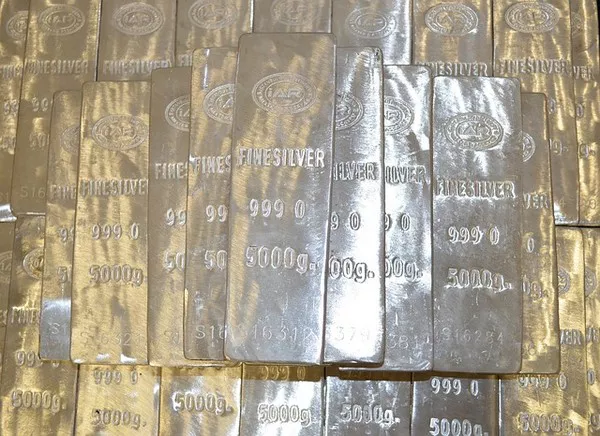In the world of precious metals, silver has always held a special place. Its shimmering luster and timeless appeal have made it a popular choice for jewelry, decorative items, and even currency for centuries. Among the various types of silver available, 925 silver, also known as sterling silver, stands out not just for its beauty but for its affordability. But what makes 925 silver so much more budget-friendly compared to other precious metals like gold or platinum? In this article, we will delve into the economic factors that contribute to the cost-effectiveness of 925 silver.
The Composition of 925 Silver
Before we explore the reasons behind its affordability, it’s important to understand what 925 silver is. The term “925 silver” refers to sterling silver, which is an alloy composed of 92.5% pure silver and 7.5% other metals, most commonly copper. This alloying process enhances the durability and strength of the silver while preserving its inherent beauty. The “925” hallmark is stamped on silver items to signify that they are made of this specific alloy.
Reasons for the Affordability of 925 Silver
Abundance of Silver Reserves
One of the primary reasons for the affordability of 925 silver is the abundant availability of silver reserves worldwide. Unlike some other precious metals, such as gold or platinum, which are relatively scarce, silver is relatively abundant in the Earth’s crust. This abundance translates into a more accessible supply of silver, which helps keep its price lower.
Lower Intrinsic Value
Intrinsic value is determined by a metal’s rarity and functional properties. While silver is undoubtedly precious and valuable, it is less rare than metals like gold, which inherently makes its intrinsic value lower. This lower intrinsic value allows silver to be more reasonably priced, making it an attractive option for a wide range of uses, from jewelry to industrial applications.
Alloying with Copper
The process of alloying silver with copper to create 925 silver is another significant factor contributing to its affordability. Copper is considerably less expensive than silver, and by blending the two metals, jewelry makers can create a more durable material without significantly increasing production costs. This allows artisans to work with 925 silver at a fraction of the cost of pure silver while maintaining its stunning appearance.
Efficient Manufacturing Processes
The jewelry industry has perfected the art of efficiently manufacturing 925 silver jewelry and decorative items. Mass production techniques, improved technology, and skilled craftsmanship have all led to cost-effective manufacturing processes. These advancements enable the production of high-quality 925 silver items at affordable prices.
Competitive Market Dynamics
Competition within the jewelry market plays a crucial role in keeping prices reasonable. With numerous jewelers and artisans offering 925 silver products, price competition is fierce. This healthy competition benefits consumers by ensuring that 925 silver items are competitively priced and of high quality.
Versatility and Popularity
925 silver’s versatility and popularity further contribute to its affordability. This precious metal are not only used for jewelry but also for a wide range of decorative items, including cutlery, tableware, and ornaments. The diversity of applications and the high demand for 925 silver keep production volumes high, which in turn helps keep prices down.
Lower Markup
The markup on 925 silver jewelry is generally lower than that of gold or platinum. This is because silver is more affordable to begin with, and jewelers can offer a more attractive price point to their customers while still maintaining a healthy profit margin. The affordability of 925 silver, combined with a reasonable markup, makes it an appealing choice for both retailers and consumers.
Ease of Maintenance
Another cost-saving aspect of 925 silver is its ease of maintenance. Unlike some other metals, silver can be cleaned and restored to its original shine relatively easily, reducing the need for expensive professional maintenance or replacement.
Cultural Significance
Cultural preferences also play a role in the affordability of 925 silver. In many cultures, silver holds a significant place in traditional jewelry and decorative items. This demand for silver, driven by cultural significance, helps maintain its accessibility and affordability.
Sustainable Practices
With growing awareness of environmental issues, sustainable practices have become increasingly important in the jewelry industry. 925 silver, being a recycled and recyclable material, aligns with sustainability goals. Many jewelers are now using recycled silver in their products, reducing the overall cost and environmental impact of production.
Conclusion
925 silver, with its affordability and timeless beauty, has become a popular choice for jewelry and decorative items. Its accessible price point, versatility, and cultural significance make it a preferred option for many consumers. While it may not hold the same long-term investment value as gold, its charm lies in its accessibility and the opportunity to enjoy exquisite silver jewelry without breaking the bank. The economic factors behind the affordability of 925 silver, including its abundant supply, alloying with copper, efficient manufacturing, and cultural significance, all contribute to its enduring appeal in the world of precious metals.


